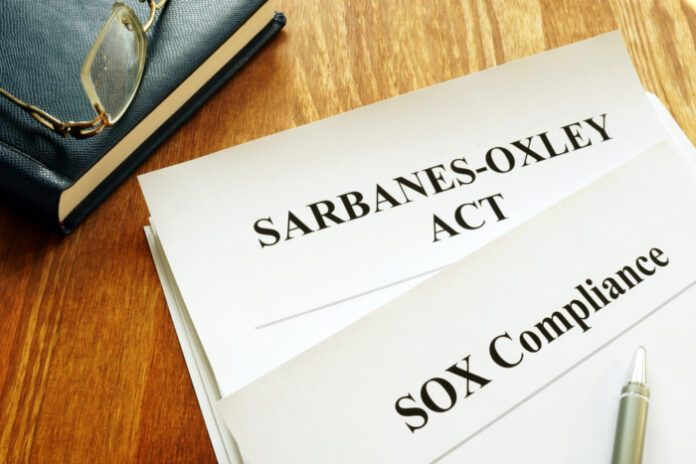In short, the Sarbanes-Oxley Act (SOX) was implemented to protect investors and help rebuild trust in the financial markets after Enron and other major accounting scandals. The law regulates public companies, their auditors, and stockbrokers. Moreover, SOX requires management and directors of public companies to certify the accuracy of financial reports filed with the Securities and Exchange Commission (SEC). Let us take a closer look at precisely what this landmark legislation does.
Why Does It Matter?
SAP SoD, Enron, Worldcom, and other major accounting scandals of the early 2000s led to the Sarbanes-Oxley Act to protect investors. SOX requires public companies to maintain accurate records of their financial transactions and have an independent audit committee. These provisions make it more difficult for companies to commit fraud. Moreover, they help investors make informed decisions.
The Sarbanes-Oxley Act was a direct response to the corporate accounting scandals of the early 2000s. These scandals, in which Enron and WorldCom were at the center, cost investors billions of dollars. This occurred when it was revealed that the companies had been using creative accounting practices to hide their financial condition. In addition to causing massive financial losses, these scandals also shook investor confidence in the stock market and led to calls for greater regulation of public companies.
The Sarbanes-Oxley Act addressed these concerns by increasing corporate transparency and accountability. The law establishes new requirements for financial reporting, internal controls, and corporate governance. For example, SOX requires public companies to maintain accurate financial transaction records and have an independent audit committee oversee the auditing process. These and other provisions of SOX are intended to make it more difficult for companies to commit fraud and to help investors make informed decisions about where to invest their money.
Section 1
The Sarbanes-Oxley Act contains 11 sections, or “titles,” that outline specific measures for corporate responsibility. The first section, the Public Company Accounting Reform and Investor Protection Act, establishes the independent Public Company Accounting Oversight Board (PCAOB) to set auditing and ethical standards for public accountants. In addition, it gives the SEC the authority to enforce these standards and impose disciplinary actions against violators.
Section 2
The second section, Auditor Independence, requires that auditors be independent of the companies they audit. The Sarbanes-Oxley Act contains provisions prohibiting relationships between public accounting firms and their clients. This includes providing non-audit services to audit clients.
Section 3
The third section, Corporate Responsibility for Financial Reports, requires public companies to maintain accurate records and disclose any material changes in their financial condition. It also establishes strict guidelines for corporate officers who certify the accuracy of financial reports filed with the SEC. A SAP SoD violation would occur when a user has more control over a particular workflow than needed.
Section 4
The fourth section, Enhanced Financial Disclosures, requires public companies to disclose more information about their internal controls and procedures for financial reporting.
Section 5
The fifth section, Analyst Conflicts of Interest, prohibits analysts from making false or misleading statements about the companies they cover.
Section 6
The sixth section, Commission, Resources and Authority, gives the SEC additional resources and authority to enforce the provisions of the Sarbanes-Oxley Act.
Section 7
The seventh section, Studies and Reports, requires the SEC to study various aspects of the Sarbanes-Oxley Act and issue reports on its findings.
Section 8
The eighth section, Corporate Fraud Accountability, creates new crimes for destroying, altering, or falsifying corporate records. It also establishes harsher penalties for individuals convicted of white-collar crimes.
Section 9
The ninth section, White Collar Crime Penalty Enhancement, increases the maximum prison sentence for certain white-collar crimes from five to 20 years.
Section 10
The tenth section, Corporate Fraud Oversight, establishes the Office of Inspector General within the Department of Justice to conduct audits and investigations of fraud in connection with federal programs and activities.
Section 11
The eleventh and final section, Corporate Responsibility for Tax Returns, requires public companies to maintain accurate records of their income tax return filings.
Final Thoughts
The Sarbanes-Oxley Act is comprehensive legislation with several provisions designed to protect investors and restore confidence in the financial markets. While some have criticized the Act as being too burdensome, its supporters argue that the benefits of the Sarbanes-Oxley Act outweigh the costs. Therefore, only time will tell whether SOX will succeed in achieving its goals.
Find a Home-Based Business to Start-Up >>> Hundreds of Business Listings.

















































